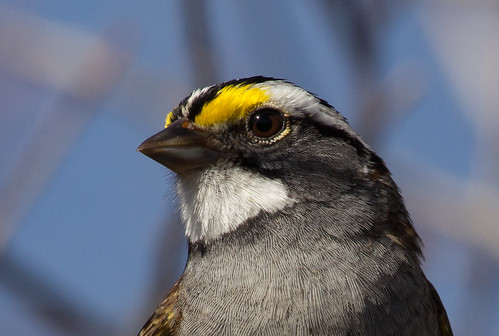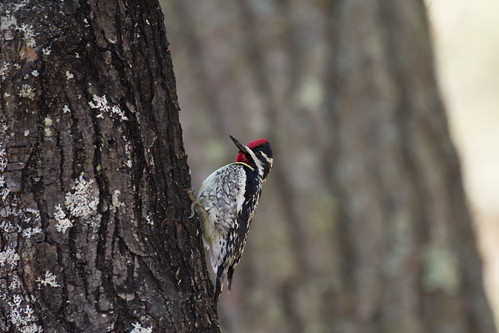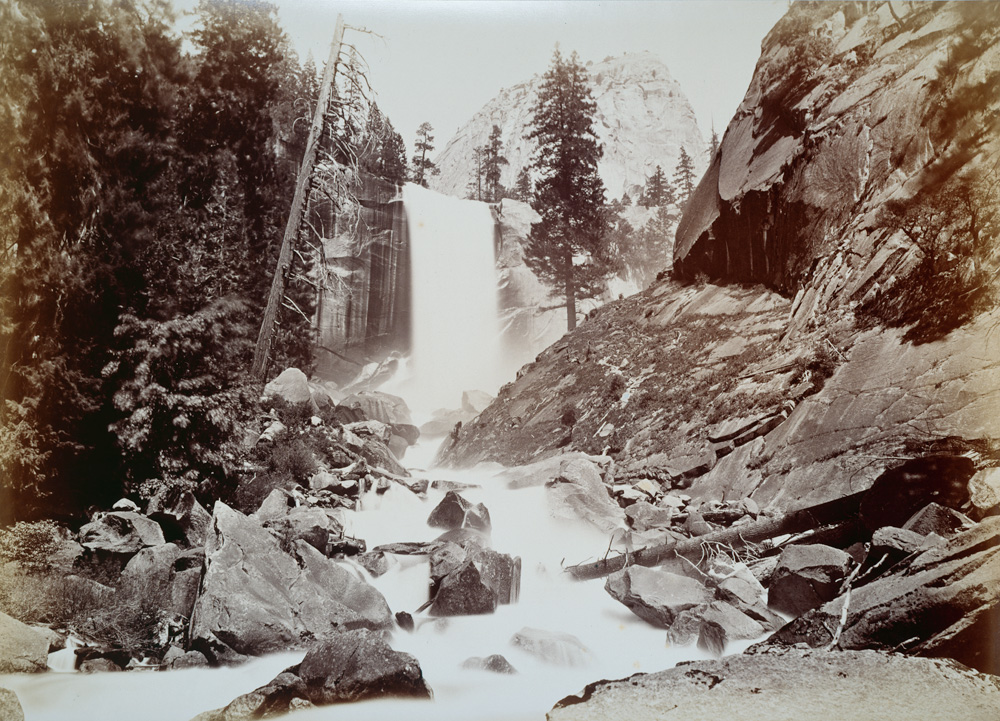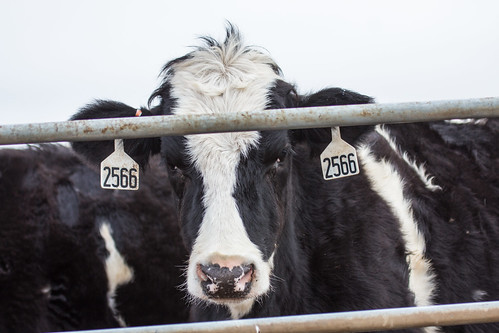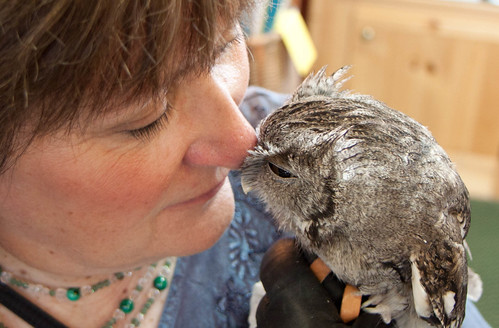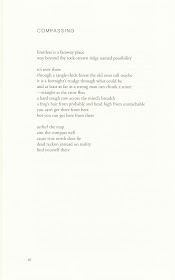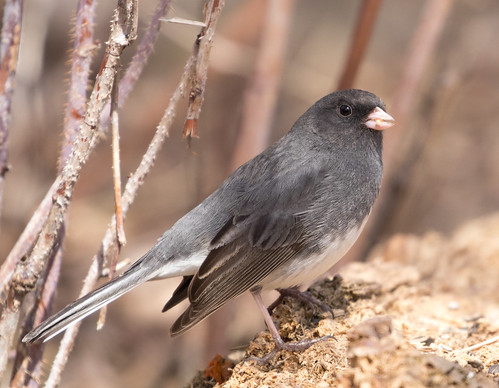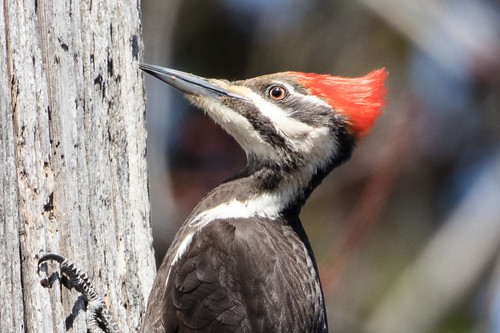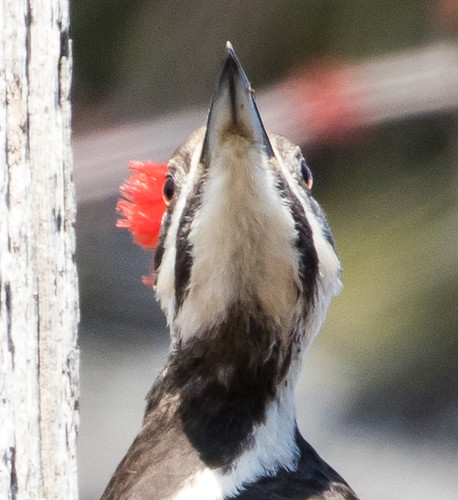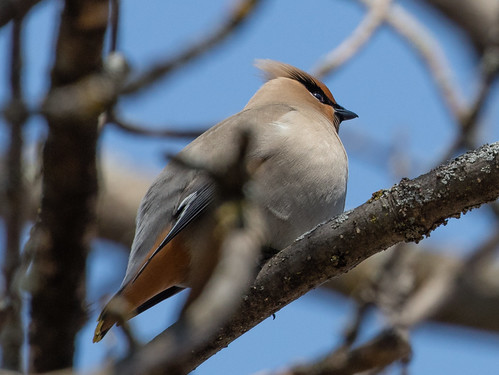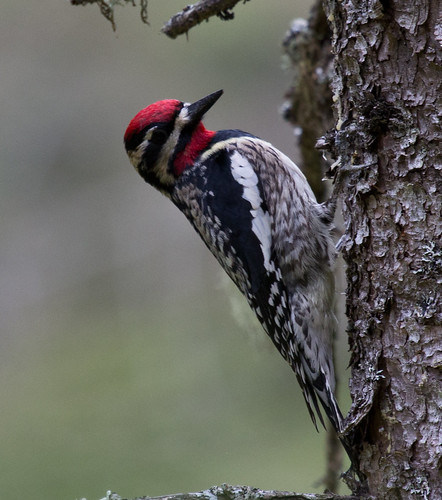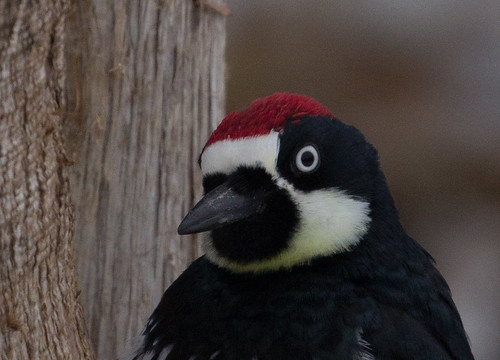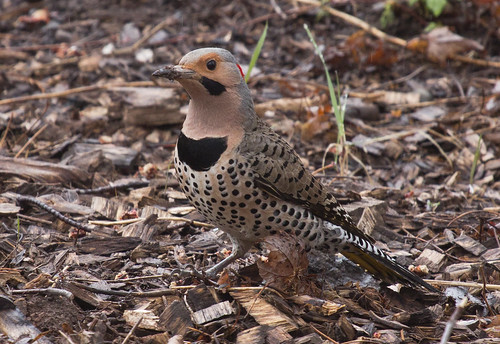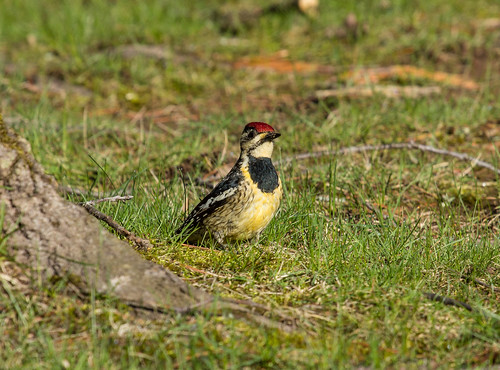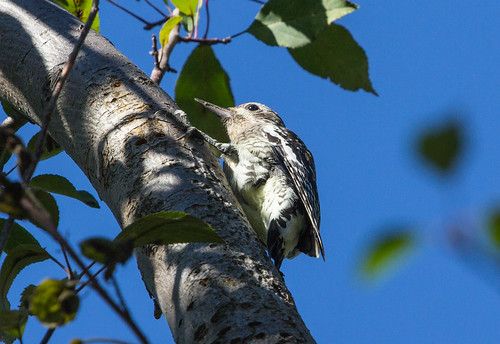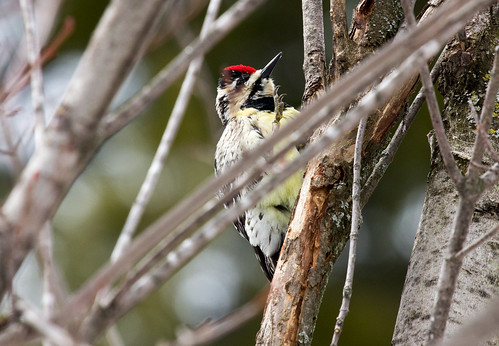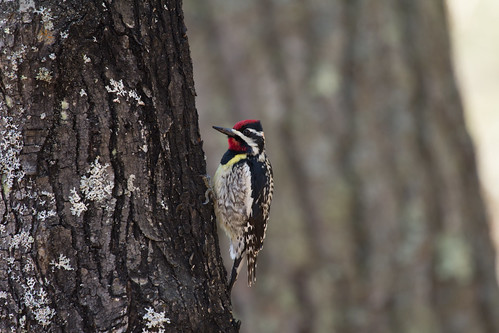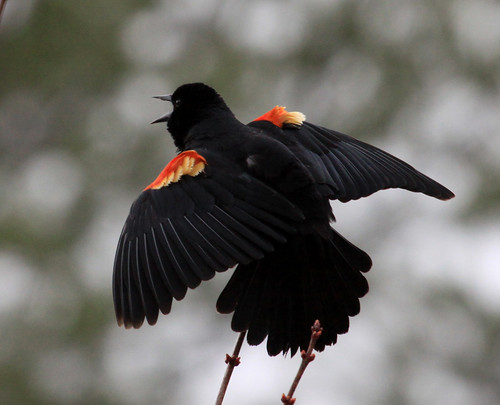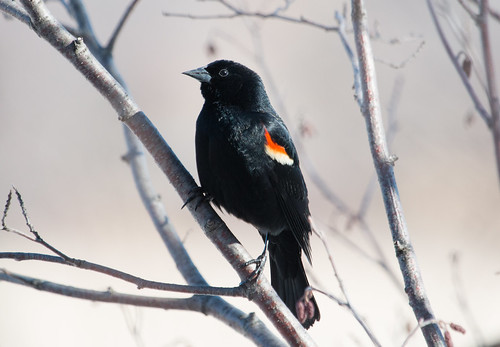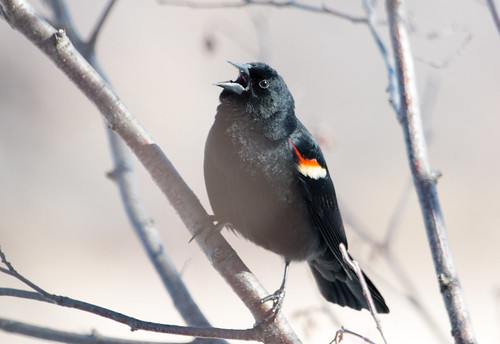The first time I ever noticed my aspen tree in full bud, back in early May in 1982, at least one Yellow-bellied Sapsucker, Ruby-crowned Kinglet, and Yellow-rumped Warbler could be seen in its branches just about every time I looked. That has been one absolute constant I can count on no matter how spring unfolds and on what timeline—the first open aspen buds draw those three species to my yard, every single year.

This year, April stayed rather cold here in Duluth, and spring migration has begun rather slowly, April days seem even crueler when robins are hunkered down against the biting wind and juncos are fluffed out against the cold. Even with the cold and wind, I appreciate April’s slow progression up here. I like savoring each new arrival without the distractions of dozens of other new arrivals. And each new arrival in April serves double duty as a promise of the warmth that will eventually come our way. Last Saturday the aspen buds were open and sure enough, there were my three reliable species—Yellow-bellied Sapsucker, Ruby-crowned Kinglet and Yellow-rumped Warbler. It may be another week or more before I spy my first hummingbird or oriole, but what is here is plenty enough for right now.
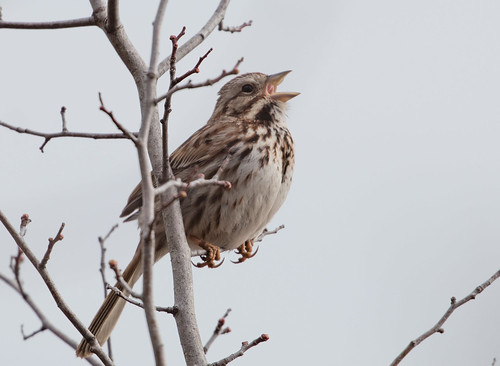
For over a week now, two territorial male Song Sparrows have been singing on and off every day. Usually I have just one nearby pair, and without nearby competitors, the male doesn’t need to sing all that often—having two has far more than doubled the number of songs I hear. Even with the windows closed the song pierces my consciousness. Ruby-crowned Kinglets and Brown Creepers catch my eye out the window several times each day, almost always in the company of a chickadee or two, and a pair of crows appears to be nesting near, though I haven’t found the nest yet—crows are sneaky. A Merlin hunts around here every few days. That is plenty often enough for me to see and enjoy him without worrying too often about which of my birds will serve as the next meal.
So I’m having a lovely spring, and biding my time before the big onrush. But a lot of birders are voicing frustration and even annoyance that they’re not seeing more by now. So I was happy to read something my friend Kenn Kaufman, author of several important books, wrote this week from Ohio near Lake Erie, where migration is much further along. Kenn wrote:
An aspect of birding that seems sad to me: The kind of birder who has to prove how expert they are by declaring every day to be a “slow day.” The intended message seems to be, “Hey, I’m so experienced that I’ve seen much better days than this. A seasoned expert like me couldn’t possibly get excited about this day.”
Well… I was out there today, on the Magee boardwalk… and I didn’t think it was “slow.” I mean, sure, it’s still April, it’s not peak season yet. There were only 10 or 12 kinds of warblers, not 25 or 30. Migrants were in single and double digit numbers, not triple digits, not yet. But they were there, and among the bare twigs, among the pale green of leaf buds just beginning to open, birds were easy to see. Kinglets and gnatcatchers jittering and fidgeting in the trees, hermit thrushes bouncing over the ground, gaudy rose-breasted grosbeaks posing at eye level, white-throated sparrows perching up in the thickets to sing about Oh Sweet Kimberly, these were all welcome arrivals. And then of course the warblers: black-throated greens with their glowing yellow faces, black-and-whites traipsing up and down trunks, Nashvilles showing off their tricolored pattern, the shocking flame-yellow of a Prothonotary, all these warblers freshly arrived from the tropics… It was cool and overcast, and all the colors looked rich and deep in the muted light. Slow day? I guess I’ll never make it as a seasoned expert, because I thought it was magical, I thought it was an extraordinary blessing to be out there in this beautiful place on the edge of spring, surrounded by miracles.
